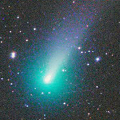
|
Now it is bright as 8.6 mag (Nov. 15, Michael Jager). It will approach to Earth down to 0.2 a.u. in December, and it is expected to brighten up to 4 mag. In the Northern Hemisphere, it stays observable in good condition for a long time until December while the comet is brightening gradually. In the Southern Hemisphere, it is not observable until mid December.
Date(TT) R.A. (2000) Decl. Delta r Elong. m1 Best Time(A, h)
Nov. 20 12 26.99 33 9.4 0.917 1.097 70 8.7 5:11 (258, 49)
Nov. 27 12 54.57 31 43.9 0.665 0.991 70 7.6 5:16 (261, 50)
|
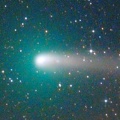
|
Now it is bright as 8.9 mag (Nov. 15, Marco Goiato). It stays 9 mag until January, and it is observable in good condition.
Date(TT) R.A. (2000) Decl. Delta r Elong. m1 Best Time(A, h)
Nov. 20 8 21.30 26 50.6 0.420 1.231 116 8.9 4:25 ( 0, 82)
Nov. 27 8 37.73 26 56.8 0.423 1.250 119 8.9 4:14 ( 0, 82)
|
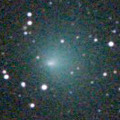
|
Now it is bright as 10.1 mag (Nov. 7, Marco Goiato). It is observable at 10 mag in good condition from October to December. In the Northern Hemisphere, it locates somewhat low at the high light.
Date(TT) R.A. (2000) Decl. Delta r Elong. m1 Best Time(A, h)
Nov. 20 21 53.82 -29 45.3 1.299 1.533 83 10.0 18:20 ( 5, 25)
Nov. 27 22 17.19 -28 25.1 1.376 1.570 81 10.2 18:18 ( 6, 27)
|
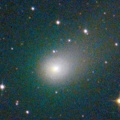
|
Now it is 9.9 mag (Nov. 15, Marco Goiato). It stays bright as 10 mag until spring for a long time. In the Northern Hemisphere, it stays observable in good condition for a long time. In the Southern Hemisphere, it locates extremely low until November.
Date(TT) R.A. (2000) Decl. Delta r Elong. m1 Best Time(A, h)
Nov. 20 7 45.23 38 42.7 2.931 3.584 124 10.2 3:50 (180, 86)
Nov. 27 7 42.33 37 58.0 2.844 3.577 131 10.1 3:20 (180, 87)
|
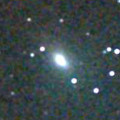
|
Now it is 11.6 mag (Nov. 2, Marco Goiato). It will brighten rapidly up to 9 mag in winter. It will be observable in good condition. In the Southern Hemisphere, it is observable in excellent condition. It will be getting higher rapidly after this also in the Northren Hemisphere.
Date(TT) R.A. (2000) Decl. Delta r Elong. m1 Best Time(A, h)
Nov. 20 23 13.93 -43 51.8 1.181 1.566 91 10.7 19:16 ( 0, 11)
Nov. 27 23 21.36 -40 15.3 1.178 1.524 89 10.4 18:56 ( 0, 15)
|
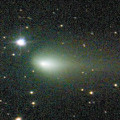
|
Now it is bright as 10.6 mag (Nov. 10, Osamu Miyazaki). It stays observable at 10-11 mag in excellent condition from summer to autumn.
Date(TT) R.A. (2000) Decl. Delta r Elong. m1 Best Time(A, h)
Nov. 20 6 57.83 8 55.4 0.961 1.776 131 10.7 3:03 ( 0, 64)
Nov. 27 6 57.30 8 10.4 0.948 1.805 137 10.8 2:35 ( 0, 63)
|
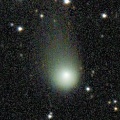
|
Now it is bright as 11.1 mag (Nov. 11, Osamu Miyazaki). It is expected to be observable at 5-6 mag for a long time from 2022 to 2023. In the Northern Hemisphere, it becomes extremely low temporarily in December, but it will be getting higher again after January. However, it is not observable at the high light from 2022 autumn to 2023 summer. In the Southern Hemisphere, it is not observable until February. But it will be observable in good condition at the high light.
Date(TT) R.A. (2000) Decl. Delta r Elong. m1 Best Time(A, h)
Nov. 20 17 25.25 17 46.1 5.411 4.768 45 11.4 18:20 ( 96, 24)
Nov. 27 17 30.23 16 49.9 5.385 4.706 42 11.4 18:18 ( 98, 19)
|
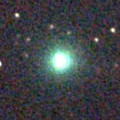
|
It brightened very rapidly, and brightened up to 8.9 mag (Sept. 11, Chris Wyatt). Now it is fading. But it is bright as 10.4 mag still now (Nov. 13, Chris Wyatt). In the Southern Hemisphere, it stays observable after this while the comet will be fading. But it stays locating low. It is not observable after this in the Northern Hemisphere.
Date(TT) R.A. (2000) Decl. Delta r Elong. m1 Best Time(A, h)
Nov. 20 13 40.00 -46 45.5 2.274 1.595 36 11.4 5:11 (319,-12)
Nov. 27 14 5.28 -48 30.3 2.343 1.666 37 11.9 5:16 (322,-12)
|
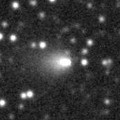
|
Major outburst occured on Oct. 17. Now it is very bright as 11.8 mag (Nov. 7, Marco Goiato). It stays observable in the evening sky for a while.
Date(TT) R.A. (2000) Decl. Delta r Elong. m1 Best Time(A, h)
Nov. 20 19 41.43 -19 37.6 2.092 1.748 56 12.3 18:20 ( 40, 24)
Nov. 27 20 1.17 -18 53.3 2.151 1.761 53 12.5 18:18 ( 42, 24)
|
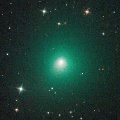
|
It brightened up to 9.5 mag in early summer (June 27, Marco Goiato). Now it is fading. It has already faded down to 13.4 mag (Oct. 25, Chris Wyatt). It is not observable already in the Northern Hemisphere. It will be unobservable soon also in the Southern Hemisphere.
Date(TT) R.A. (2000) Decl. Delta r Elong. m1 Best Time(A, h)
Nov. 20 18 7.40 -31 47.5 3.317 2.570 34 12.7 18:20 ( 49, 1)
Nov. 27 18 23.14 -32 18.9 3.408 2.618 31 12.9 18:18 ( 50, -1)
|
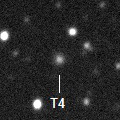
|
Now it is 13.8 mag (Oct. 9, Chris Wyatt). It is expected to brighten up to 11.5 mag in 2022. In the Southern Hemisphere, it stas observable in good condition for a long time, although it became extremely low temporarily from August to September. It is getting observable also in the Northern Hemisphere.
Date(TT) R.A. (2000) Decl. Delta r Elong. m1 Best Time(A, h)
Nov. 20 11 32.45 -27 19.0 5.020 4.558 57 12.9 5:11 (326, 19)
Nov. 27 11 38.34 -27 46.0 4.922 4.537 61 12.8 5:16 (332, 21)
|

|
Major outburst occured on Sept. 25, and it brightened up to 10.0 mag (Oct. 1, Toshihiko Ikemura, Hirohisa Sato). Now it is fading. But it is bright as 11.0 mag still now (Nov. 13, Chris Wyatt).
Date(TT) R.A. (2000) Decl. Delta r Elong. m1 Best Time(A, h)
Nov. 20 4 43.29 32 10.4 4.988 5.932 161 13.3 0:49 ( 0, 87)
Nov. 27 4 39.53 32 3.7 4.968 5.934 167 13.3 0:18 ( 0, 87)
|
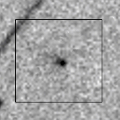
|
Now it is not observable. In the Southern Hemisphere, it will appear in the morning sky at 11 mag in late January, then it stays observable at 11 mag until June. In the Northern Hemisphere, it will appear in the morning sky in December, but it stays locating extremely low for a long time.
Date(TT) R.A. (2000) Decl. Delta r Elong. m1 Best Time(A, h)
Nov. 20 14 57.24 -13 34.6 2.893 1.938 12 13.6 5:11 (283, -6)
Nov. 27 15 14.61 -14 48.6 2.838 1.900 14 13.4 5:16 (286, -3)
|
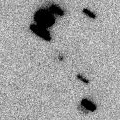
|
Now it is 17.1 mag (Nov. 3, Toshihiko Ikemura, Hirohisa Sato). It will brightens rapidly. And it is expected to be observable at 12-13 mag in good condition from December to February. However, it is much fainter than this ephemeris recently.
Date(TT) R.A. (2000) Decl. Delta r Elong. m1 Best Time(A, h)
Nov. 20 22 9.50 -10 16.5 0.760 1.279 93 14.0 18:20 ( 2, 45)
Nov. 27 22 22.86 -10 3.8 0.753 1.233 89 13.7 18:18 ( 7, 45)
|
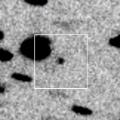
|
It will brighten up to 12 mag from winter to spring. In the Northern Hemisphere, it is appearing in the morning sky. In the Southern Hemisphere, it is not observable until January.
Date(TT) R.A. (2000) Decl. Delta r Elong. m1 Best Time(A, h)
Nov. 20 13 46.79 -4 14.6 2.605 1.841 31 14.0 5:11 (285, 14)
Nov. 27 14 3.93 -6 1.1 2.537 1.808 34 13.9 5:16 (289, 16)
|
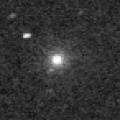
|
It was observed at 9-10 mag from late July to early August. Now it is not observable. It will appear in the morning sky in December, but it will be fainter than 15 mag at that time.
Date(TT) R.A. (2000) Decl. Delta r Elong. m1 Best Time(A, h)
Nov. 20 14 45.99 -13 56.1 2.809 1.868 14 14.0 5:11 (284, -4)
Nov. 27 14 58.91 -15 36.3 2.878 1.962 17 14.2 5:16 (289, -1)
|

|
It brightened up to 12.3 mag from spring to summer (June 15, Marco Goiato). Now it is fading. It has already faded down to 13.8 mag (Sept. 8, Chris Wyatt). In the Northern Hemisphere, it is appearing in the morning sky. It is not observable until January in the Southern Hemisphere.
Date(TT) R.A. (2000) Decl. Delta r Elong. m1 Best Time(A, h)
Nov. 20 14 17.16 -0 20.0 4.746 3.904 28 14.0 5:11 (278, 10)
Nov. 27 14 19.95 0 13.1 4.710 3.936 34 14.0 5:16 (282, 16)
|
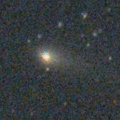
|
Now it is 13.3 mag (Nov. 3, Toshihiko Ikemura, Hirohisa Sato). It stays 14 mag unil December, and it is observable in excellent condition.
Date(TT) R.A. (2000) Decl. Delta r Elong. m1 Best Time(A, h)
Nov. 20 0 37.64 -3 11.4 0.883 1.693 129 14.0 20:40 ( 0, 52)
Nov. 27 0 45.15 -2 34.2 0.932 1.697 124 14.1 20:20 ( 0, 53)
|

|
Now it is 16.0 mag (Aug. 16, iTelescope Observatory, Siding Spring). It is expected to brighten up to 13 mag in 2022. In the Southern Hemisphere, it stays observable in good condition for a long time, although it became extremely low temporarily from September to October. In the Northern Hemisphere, it becomes observable temporarily in the extremely low sky in December. But it becomes unobservable again soon.
Date(TT) R.A. (2000) Decl. Delta r Elong. m1 Best Time(A, h)
Nov. 20 12 44.21 -39 40.0 4.382 3.718 42 14.9 5:11 (321, 0)
Nov. 27 12 46.50 -41 34.0 4.280 3.684 47 14.8 5:16 (327, 2)
|
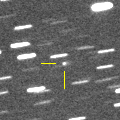
|
It brightened rapidly. Now it is 15.6 mag (Nov. 4, Toshihiko Ikemura, Hirohisa Sato). It is observable at 15 mag in excellent condition in winter.
Date(TT) R.A. (2000) Decl. Delta r Elong. m1 Best Time(A, h)
Nov. 20 8 36.87 19 21.7 1.931 2.464 110 15.3 4:41 ( 0, 74)
Nov. 27 8 39.75 18 38.8 1.856 2.468 117 15.3 4:17 ( 0, 74)
|
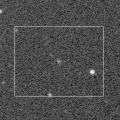
|
Now it is 15.9 mag (Oct. 24, Taras Prystavski). It will brighten up to 12.5 mag in 2022 summer. In the Southern Hemisphere, it stays observable in excellent condition for a long time. In the Northern Hemisphere, it is not observable until August in 2022.
Date(TT) R.A. (2000) Decl. Delta r Elong. m1 Best Time(A, h)
Nov. 20 23 16.83 -74 8.3 4.246 4.143 77 15.3 19:18 ( 0,-19)
Nov. 27 22 56.87 -72 44.1 4.272 4.099 73 15.3 18:31 ( 0,-18)
|

|
Now it is 15.8 mag (Oct. 4, Thomas Lehmann). Now it is not observable. It will appear in the morning sky at 15 mag in January. Then it will brighten up to 13 mag in 2022 summer.
Date(TT) R.A. (2000) Decl. Delta r Elong. m1 Best Time(A, h)
Nov. 20 15 36.48 -19 0.5 4.227 3.240 1 15.3 5:11 (282,-17)
Nov. 27 15 47.20 -19 44.8 4.209 3.229 5 15.3 5:16 (285,-13)
|

|
Now it is 15.9 mag (Oct. 8, Thomas Lehmann). It stays at 14-15 mag for a long time from 2021 to 2022. It is not observable from November to January.
Date(TT) R.A. (2000) Decl. Delta r Elong. m1 Best Time(A, h)
Nov. 20 16 40.24 -24 14.7 5.946 4.995 14 15.4 18:20 ( 67, -9)
Nov. 27 16 43.85 -25 2.9 5.970 4.996 8 15.4 18:18 ( 69,-14)
|

|
Now it is 14.5 mag (Nov. 4, Toshihiko Ikemura, Hirohisa Sato). It will be fading after this. In the Southern Hemisphere, it stays observable in good condition for a long time. It locates low in the Northern Hemisphere.
Date(TT) R.A. (2000) Decl. Delta r Elong. m1 Best Time(A, h)
Nov. 20 22 24.03 -22 3.9 4.618 4.757 92 15.4 18:26 ( 0, 33)
Nov. 27 22 25.27 -20 55.0 4.750 4.780 85 15.5 18:18 ( 5, 34)
|
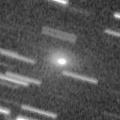
|
Now it is 15.7 mag (Nov. 4, Toshihiko Ikemura, Hirohisa Sato). It stays 15 mag until November. It will be observable in excellent condition in the Northern Hemisphere. It locates somewhat low in the Southern Hemisphere.
Date(TT) R.A. (2000) Decl. Delta r Elong. m1 Best Time(A, h)
Nov. 20 7 24.42 33 15.3 1.008 1.801 128 15.4 3:29 ( 0, 88)
Nov. 27 7 26.06 34 38.4 0.990 1.827 135 15.5 3:03 ( 0, 90)
|
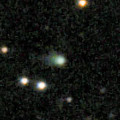
|
Now it is 15.3 mag (Oct. 29, Toshihiko Ikemura, Hirohisa Sato). It is expected to brighten up to 11 mag in 2023. In the Northern Hemisphere, it stays observable in good condition for a long time, although it becomes low temporarily in November. It is not observable in the Southern Hemisphere.
Date(TT) R.A. (2000) Decl. Delta r Elong. m1 Best Time(A, h)
Nov. 20 16 19.26 32 0.5 6.150 5.603 52 15.5 18:20 (117, 18)
Nov. 27 16 22.08 31 35.0 6.102 5.560 52 15.4 18:18 (119, 14)
|
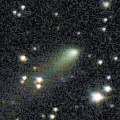
|
Now it is 14.2 mag (Oct. 21, Giuseppe Pappa). It will be fading after this. In the Northern Hemisphere, it stays observable in good condition for a long time, although it becomes extremely low temporarily in November. In the Southern Hemisphere, it is not observable until late January.
Date(TT) R.A. (2000) Decl. Delta r Elong. m1 Best Time(A, h)
Nov. 20 16 8.86 16 55.5 3.085 2.374 37 15.5 18:20 (105, 8)
Nov. 27 16 10.04 16 59.6 3.093 2.395 38 15.5 5:16 (252, 4)
|
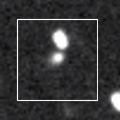
|
Now it is 14.2 mag (Nov. 9, Toshihiko Ikemura, Hirohisa Sato). It is expected to brighten up to 10 mag in 2023. In the Northern Hemisphere, it stays observable in good condition until 2023 autumn, although it became extremely low temporarily in September. In the Southern Hemipshere, it stays unobservable until 2023 summer.
Date(TT) R.A. (2000) Decl. Delta r Elong. m1 Best Time(A, h)
Nov. 20 12 53.99 35 30.4 6.129 5.830 67 15.6 5:11 (252, 44)
Nov. 27 12 57.09 36 9.3 5.980 5.774 73 15.5 5:16 (254, 50)
|
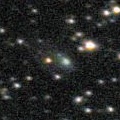
|
Now it is 15.2 mag (Oct. 29, Toshihiko Ikemura, Hirohisa Sato). It is expected to brighten up to 11 mag from spring to summer in 2022. In the Southen Hemisphere, it locates somewhat low in 2021, but it will be observable in good condition at the high light for a long time. In the Northern Hemisphere, it is observable in good condition in 2021, but it will not be observable at the high light.
Date(TT) R.A. (2000) Decl. Delta r Elong. m1 Best Time(A, h)
Nov. 20 18 45.76 1 17.7 3.591 3.049 49 15.6 18:20 ( 68, 30)
Nov. 27 18 49.80 -0 20.5 3.616 2.986 43 15.5 18:18 ( 70, 25)
|

|
Now it is 15.3 mag (Oct. 25, Chris Wyatt). It will be fading slowly after this. It will be unobservable in December.
Date(TT) R.A. (2000) Decl. Delta r Elong. m1 Best Time(A, h)
Nov. 20 20 2.19 -32 10.3 3.588 3.196 59 15.5 18:20 ( 29, 16)
Nov. 27 20 12.36 -31 38.2 3.683 3.212 54 15.6 18:18 ( 32, 15)
|

|
Now it is 15 mag (Oct. 31, Giuseppe Pappa). It was expected to brighten up to 13 mag from spring to summer. But actually, it is fainter than originally expected. It will be fading slowly after this. In the Southern Hemisphere, it stays observable in good condition for a long time. In the Northern Hemisphere, it is not observable until July in 2022.
Date(TT) R.A. (2000) Decl. Delta r Elong. m1 Best Time(A, h)
Nov. 20 22 10.13 -66 38.8 3.981 3.843 74 15.6 18:20 ( 1,-11)
Nov. 27 22 20.46 -64 36.0 4.054 3.866 72 15.6 18:18 ( 2, -9)
|
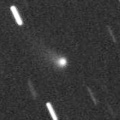
|
Now it is 15.9 mag (Sept. 24, D. Buczynski). In the Northern Hemisphere, it stays observable at 15-16 mag for a long time until early 2022, although it became extremely low temporarily from September to October. In the Southern Hemisphere, it is not observable until December.
Date(TT) R.A. (2000) Decl. Delta r Elong. m1 Best Time(A, h)
Nov. 20 13 16.18 19 25.0 3.637 3.139 52 15.8 5:11 (269, 33)
Nov. 27 13 17.98 18 21.1 3.573 3.160 57 15.8 5:16 (274, 39)
|
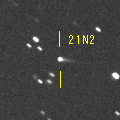
|
Brightened rapidly. Now it is 15.5 mag (Nov. 2, Toshihiko Ikemura, Hirohisa Sato). It is observable at 15.5-16 mag in good condition until winter.
Date(TT) R.A. (2000) Decl. Delta r Elong. m1 Best Time(A, h)
Nov. 20 2 7.49 13 23.9 2.869 3.797 156 15.8 22:09 ( 0, 68)
Nov. 27 2 5.24 12 50.5 2.918 3.798 148 15.8 21:39 ( 0, 68)
|
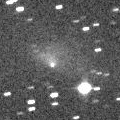
|
It brightened up to 10.1 mag in spring (Apr. 10, Marco Goiato). Now it is fading. It has already faded down to 16.0 mag (Nov. 2, Toshihiko Ikemura, Hirohisa Sato). It stays observable in good condition for a long time after this while the comet will fading.
Date(TT) R.A. (2000) Decl. Delta r Elong. m1 Best Time(A, h)
Nov. 20 4 21.75 5 17.8 1.646 2.605 162 15.8 0:27 ( 0, 60)
Nov. 27 4 13.93 5 20.9 1.684 2.647 164 15.9 23:47 ( 0, 60)
|
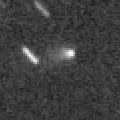
|
Now it is 17.6 mag (Nov. 5, Toshihiko Ikemura, Hirohisa Sato). It is expected to brighten up to 15.5 mag in winter. In the Northern Hemisphere, it stays observable in good condition for a long time. It is not observable at all in the Southern Hemisphere. It is fainter than this ephemeris recently.
Date(TT) R.A. (2000) Decl. Delta r Elong. m1 Best Time(A, h)
Nov. 20 15 55.81 62 31.1 3.015 3.043 82 15.9 18:20 (149, 28)
Nov. 27 16 1.04 63 4.4 2.963 3.026 84 15.9 5:16 (211, 29)
|
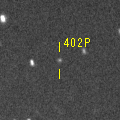
|
First return of a new periodic comet observed at 16 mag from 2003 to 2004. Now it is 16.6 mag (Oct. 29, Toshihiko Ikemura, Hirohisa Sato). It will brighten up to 16 mag in winter, and it will be observable in excellent condition.
Date(TT) R.A. (2000) Decl. Delta r Elong. m1 Best Time(A, h)
Nov. 20 6 39.05 0 47.1 3.204 3.940 132 16.0 2:44 ( 0, 56)
Nov. 27 6 36.78 0 56.8 3.140 3.939 139 15.9 2:14 ( 0, 56)
|
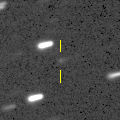
|
Now it is 17.0 mag (Nov. 1, Toshihiko Ikemura, Hirohisa Sato). It will brighten rapidly, and it will be observable at 13.5 mag in good condition from winter to spring.
Date(TT) R.A. (2000) Decl. Delta r Elong. m1 Best Time(A, h)
Nov. 20 9 46.05 17 37.3 2.447 2.714 94 16.3 5:11 (331, 70)
Nov. 27 9 52.26 17 14.1 2.332 2.689 100 16.1 5:16 (350, 72)
|
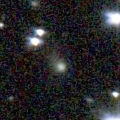
|
Now it is 16.2 mag (Oct. 29, Toshihiko Ikemura, Hirohisa Sato). It is expected to brighten up to 11 mag in 2023. In the Northern Hemisphere, it is observable in good condition in 2021. But it is observable only until November in 2022. In the Southern Hemisphere, it is not observable until February. But it will be observable in good condition at the high light.
Date(TT) R.A. (2000) Decl. Delta r Elong. m1 Best Time(A, h)
Nov. 20 17 48.64 22 47.0 6.308 5.762 52 16.1 18:20 ( 97, 31)
Nov. 27 17 52.96 21 54.4 6.302 5.713 49 16.1 18:18 ( 99, 26)
|
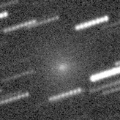
|
Now it is 14.7 mag (Oct. 14, Sandor Szabo). It stays observable in good condition for a long time. It will be fading rapidly after this, and it will be fainter than 18 mag in January.
Date(TT) R.A. (2000) Decl. Delta r Elong. m1 Best Time(A, h)
Nov. 20 10 37.44 -2 20.4 1.476 1.564 75 16.2 5:11 (326, 47)
Nov. 27 10 47.95 -4 14.0 1.462 1.613 79 16.5 5:16 (334, 48)
|
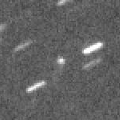
|
Now it is 16.9 mag (Oct. 29, Toshihiko Ikemura, Hirohisa Sato). It will brighten up to 16 mag in 2022. In the Northern Hemisphere, it stays observable in good condition for a long time. In the Southern Hemisphere, it is not observable until 2023.
Date(TT) R.A. (2000) Decl. Delta r Elong. m1 Best Time(A, h)
Nov. 20 9 53.82 70 52.9 3.600 4.009 107 16.3 5:11 (187, 54)
Nov. 27 10 3.72 73 37.4 3.531 3.988 110 16.2 5:16 (183, 51)
|
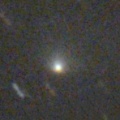
|
It brightened up to 14.5 mag in autumn (Oct. 1, Ken-ichi Kadota). Now it is fading. It has already faded down to 16.2 mag (Nov. 4, Toshihiko Ikemura, Hirohisa Sato). It will be fading rapidly after this. It will be fainter than 18 mag in February.
Date(TT) R.A. (2000) Decl. Delta r Elong. m1 Best Time(A, h)
Nov. 20 23 19.30 -15 48.4 1.863 2.344 106 16.2 19:22 ( 0, 39)
Nov. 27 23 25.72 -15 4.4 1.953 2.354 101 16.4 19:01 ( 0, 40)
|
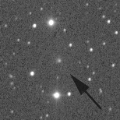
|
It brightened up to 14.2 mag in early summer (June 10, Thomas Lehmann). Now it is fading. In the Northern Hemisphere, it is appearing in the morning sky. In the Southern Hemisphere, it will never be observable again.
Date(TT) R.A. (2000) Decl. Delta r Elong. m1 Best Time(A, h)
Nov. 20 13 59.53 31 56.6 2.889 2.493 57 16.3 5:11 (250, 30)
Nov. 27 14 16.45 33 20.0 2.873 2.543 60 16.3 5:16 (250, 34)
|
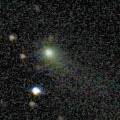
|
Now it is 16.4 mag (Oct. 22, ATLAS-MLO, Mauna Loa). It stays observable in good condition for a long time. But it will be fading after this.
Date(TT) R.A. (2000) Decl. Delta r Elong. m1 Best Time(A, h)
Nov. 20 23 7.11 3 59.6 1.699 2.258 111 16.4 19:09 ( 0, 59)
Nov. 27 23 13.11 4 39.7 1.790 2.272 106 16.5 18:48 ( 0, 60)
|
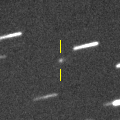
|
Now it is 16.9 mag (Nov. 9, Toshihiko Ikemura, Hirohisa Sato). It will brighten up to 15.5 mag, and will be observable in excellent condition in winter.
Date(TT) R.A. (2000) Decl. Delta r Elong. m1 Best Time(A, h)
Nov. 20 10 36.58 9 55.1 1.924 2.014 80 16.5 5:11 (315, 58)
Nov. 27 10 48.69 9 8.3 1.857 2.018 84 16.4 5:16 (325, 60)
|
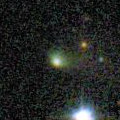
|
Now it is 15.4 mag (Oct. 20, Ken-ichi Kadota). It continues brightening even after the perihelion passage. It may stay 15-16 mag for a while.
Date(TT) R.A. (2000) Decl. Delta r Elong. m1 Best Time(A, h)
Nov. 20 0 53.91 -14 14.7 2.442 3.135 126 16.5 20:56 ( 0, 41)
Nov. 27 0 54.72 -13 45.5 2.555 3.173 120 16.7 20:29 ( 0, 41)
|
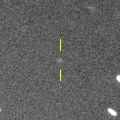
|
Now it is 16.3 mag (Oct. 29, Toshihiko Ikemura, Hirohisa Sato). It continues brightening even after the perihelion passage. It stays observable at 16-17 mag in good condition for a while.
Date(TT) R.A. (2000) Decl. Delta r Elong. m1 Best Time(A, h)
Nov. 20 4 55.67 -16 29.6 2.997 3.803 139 16.5 1:01 ( 0, 39)
Nov. 27 4 50.85 -16 27.8 3.002 3.821 141 16.5 0:28 ( 0, 39)
|
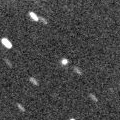
|
Now it is 16.9 mag (Oct. 22, J.-G. Bosch, F. Kugel). It is expected to brighten up to 4.5 mag in 2022 April. However, it is not observable at the high light. In the Northern Hemisphere, it stays observable until early February when it brightens up to 14 mag. Then it will appear at 6 mag in mid May, and it stays observable in good condition after that while the comet will be fading. In the Southern Hemisphere, it stays observable until December when it brightens up to 16 mag. But after that, it is not observable until 2022 August.
Date(TT) R.A. (2000) Decl. Delta r Elong. m1 Best Time(A, h)
Nov. 20 21 55.00 10 10.7 2.589 2.875 96 16.7 18:20 ( 13, 65)
Nov. 27 21 55.59 8 40.3 2.605 2.779 89 16.5 18:18 ( 25, 62)
|
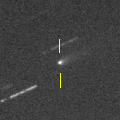
|
Now it is 16.9 mag (Nov. 4, Toshihiko Ikemura, Hirohisa Sato). It stays observable at 17 mag from autumn to winter. In the Northern Hemisphere, it stays observable in good condition. In the Southern Hemisphere, it stays extremely low until November.
Date(TT) R.A. (2000) Decl. Delta r Elong. m1 Best Time(A, h)
Nov. 20 11 27.35 6 35.1 1.959 1.829 67 16.7 5:11 (303, 47)
Nov. 27 11 40.31 4 41.5 1.913 1.846 71 16.7 5:16 (311, 49)
|
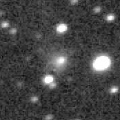
|
Now it is 16.3 mag (Oct. 26, ATLAS-MLO, Mauna Loa). It is observable at 16 mag from 2020 to 2021. It locates low in the Southern Hemisphere.
Date(TT) R.A. (2000) Decl. Delta r Elong. m1 Best Time(A, h)
Nov. 20 21 30.89 24 28.8 6.048 6.225 95 16.8 18:20 ( 47, 75)
Nov. 27 21 31.42 23 13.9 6.166 6.240 89 16.8 18:18 ( 58, 70)
|

|
Now it is 17.0 mag (Oct. 18, ATLAS-HKO, Haleakala). It brightened rapidly. It stays 17 mag for a long time from 2021 to 2022. In the Southern Hemisphere, it stays observable in good condition for a long time. In the Northern Hemisphere, it will be observable only in extremely low sky from autumn to winter.
Date(TT) R.A. (2000) Decl. Delta r Elong. m1 Best Time(A, h)
Nov. 20 9 4.25 -34 59.4 5.308 5.332 86 16.8 5:08 ( 0, 20)
Nov. 27 9 0.91 -36 40.1 5.231 5.333 90 16.8 4:38 ( 0, 18)
|
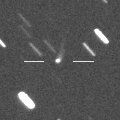
|
It was expected to brighten up to 14.5 mag from spring to summer. But actually, it is fainter than expected. Now it is 16.4 mag (Oct. 4, ATLAS-MLO, Mauna Loa). In the Southern Hemisphere, it stays observable for a long time. In the Northern Hemisphere, it is not observable after this.
Date(TT) R.A. (2000) Decl. Delta r Elong. m1 Best Time(A, h)
Nov. 20 11 59.01 -52 27.6 3.919 3.430 53 16.9 5:11 (335, -5)
Nov. 27 12 0.76 -52 49.7 3.914 3.474 56 16.9 5:16 (340, -3)
|
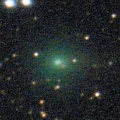
|
It brightened very rapidly up to 10.7 mag in July (July 20, Osamu Miyazaki). Now it is fading. It has already faded down to 17.3 mag (Nov. 4, Toshihiko Ikemura, Hirohisa Sato). It stays observable in the morning sky for a long time.
Date(TT) R.A. (2000) Decl. Delta r Elong. m1 Best Time(A, h)
Nov. 20 9 4.70 26 27.2 1.421 1.947 106 16.9 5:09 ( 0, 81)
Nov. 27 9 4.63 26 55.5 1.403 2.012 113 17.0 4:42 ( 0, 82)
|
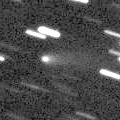
|
It brightened up to 15.2 mag in summer (Aug. 25, Ken-ichi Kadota). Now it is fading. It has already faded down to 17.0 mag (Nov. 4, Toshihiko Ikemura, Hirohisa Sato). It will be fainter than 18 mag in December. In the Northern Hemisphere, it stays observable in good condition for a long time. It locates extremely low in the Southern Hemisphere.
Date(TT) R.A. (2000) Decl. Delta r Elong. m1 Best Time(A, h)
Nov. 20 9 6.20 39 6.3 1.233 1.812 108 16.9 5:11 (180, 86)
Nov. 27 9 14.28 40 40.5 1.214 1.850 114 17.1 4:51 (180, 84)
|
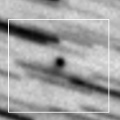
|
Now it is 17.3 mag (Oct. 29, Toshihiko Ikemura, Hirohisa Sato). It is expected to brighten up to 11 mag in 2022 summer. In the Northern Hemisphere, it stays observable in good condition until 2022 June when it brightens up to 11 mag. But it is not observable after the high light. In the Souther Hemisphere, it is not observable until 2022 October.
Date(TT) R.A. (2000) Decl. Delta r Elong. m1 Best Time(A, h)
Nov. 20 22 38.71 58 58.6 3.095 3.612 114 17.0 18:40 (180, 66)
Nov. 27 22 33.99 57 46.1 3.065 3.537 110 16.9 18:18 (177, 67)
|

|
Now it is 16.3 mag (Oct. 29, Toshihiko Ikemura, Hirohisa Sato). It stays at 16-17 mag from 2020 to 2021. In the Northern Hemisphere, it stays observable in good condition for a long time. In the Southern Hemisphere, it is not observable after this.
Date(TT) R.A. (2000) Decl. Delta r Elong. m1 Best Time(A, h)
Nov. 20 18 28.52 47 4.8 9.122 8.944 76 16.9 18:20 (124, 46)
Nov. 27 18 31.37 47 0.3 9.154 8.951 75 17.0 18:18 (125, 42)
|
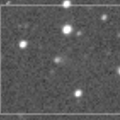
|
First return of a new periodic comet which brightened up to 17 mag in 2006. Now it is 17.4 mag (Sept. 27, N. Paul, E. Cortes). It stays 17 mag from 2021 to 2022. In the Southern Hemisphere, it stays observable in good condition for a while. It locates extremely low in the Northern Hemisphere.
Date(TT) R.A. (2000) Decl. Delta r Elong. m1 Best Time(A, h)
Nov. 20 21 59.99 -50 4.4 3.181 3.129 77 16.9 18:20 ( 3, 5)
Nov. 27 22 7.83 -47 59.9 3.247 3.123 74 17.0 18:18 ( 6, 7)
|
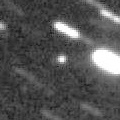
|
Now it is 17.0 mag (Oct. 29, Toshihiko Ikemura, Hirohisa Sato). In the Northern Hemisphere, it stays observable in good condition after this while the comet will be fading. In the Southern Hemisphere, it stays locating extremely low for a long time.
Date(TT) R.A. (2000) Decl. Delta r Elong. m1 Best Time(A, h)
Nov. 20 4 59.63 43 3.6 2.240 3.143 151 17.0 1:05 (180, 82)
Nov. 27 4 51.44 43 0.5 2.269 3.198 156 17.0 0:30 (180, 82)
|

|
It brightened up to 11.6 mag in winter (Feb. 18, Thomas Lehmann). Now it is fading. It has already faded down to 17.6 mag (Oct. 18, J. Drummond). In the Southern Hemisphere, it stays observable in good condition after this. In the Northern Hemisphere, it will never be observable after this.
Date(TT) R.A. (2000) Decl. Delta r Elong. m1 Best Time(A, h)
Nov. 20 1 45.70 -66 44.1 4.288 4.417 90 17.0 21:46 ( 0,-12)
Nov. 27 1 32.68 -65 10.2 4.394 4.480 88 17.1 21:06 ( 0,-10)
|

|
First return of a new periodic comet which brightened up to 17 mag in 2011. Now it is 16.8 mag (Oct. 10, Ken-ichi Kadota). It stays observable at 17 mag in good condition until 2022 spring.
Date(TT) R.A. (2000) Decl. Delta r Elong. m1 Best Time(A, h)
Nov. 20 11 50.42 5 21.7 1.756 1.559 61 17.2 5:11 (299, 42)
Nov. 27 12 9.28 3 25.7 1.711 1.555 63 17.1 5:16 (304, 43)
|
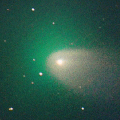
|
It brightened up to 9.7 mag in June (June 4, Michael Jager). Now it is fading. It has already faded down to 16.3 mag (Oct. 12, ATLAS-MLO, Mauna Loa). In the Southern Hemisphere, it stays observable in excellent condition for a long time. In the Northern Hemisphere, it becomes extremely low after this.
Date(TT) R.A. (2000) Decl. Delta r Elong. m1 Best Time(A, h)
Nov. 20 23 32.72 -33 0.6 1.891 2.291 100 17.1 19:35 ( 0, 22)
Nov. 27 23 38.66 -30 58.9 2.016 2.344 96 17.4 19:13 ( 0, 24)
|

|
Now it is 18.7 mag (Oct. 14, Catalina Sky Survey). In the Northern Hemisphere, it stays observable at 17 mag in good condition from November to December. It locates low in the Southern Hemisphere.
Date(TT) R.A. (2000) Decl. Delta r Elong. m1 Best Time(A, h)
Nov. 20 3 15.93 38 8.8 1.275 2.232 160 17.2 23:16 (180, 87)
Nov. 27 2 55.64 36 28.6 1.257 2.202 157 17.2 22:28 (180, 89)
|

|
Now it is 17.4 mag (Nov. 4, Toshihiko Ikemura, Hirohisa Sato). It stays 17-18 mag for a long time from 2021 to 2022. It is observable in excellent condition in the Northern Hemisphere, It locates somewhat low in the Southern Hemisphere.
Date(TT) R.A. (2000) Decl. Delta r Elong. m1 Best Time(A, h)
Nov. 20 4 18.28 34 17.7 4.499 5.452 163 17.2 0:24 ( 0, 89)
Nov. 27 4 6.45 34 0.2 4.477 5.443 167 17.2 23:39 ( 0, 89)
|
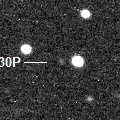
|
Now it is 18.7 mag (Nov. 3, Toshihiko Ikemura, Hirohisa Sato). It will brighten up to 16.5-17 mag in winter. In its last apparition in 2015, it brightened up to 13 mag.
Date(TT) R.A. (2000) Decl. Delta r Elong. m1 Best Time(A, h)
Nov. 20 22 11.78 -28 40.0 1.736 1.953 87 17.3 18:20 ( 1, 26)
Nov. 27 22 21.40 -27 24.4 1.772 1.916 82 17.3 18:18 ( 5, 28)
|
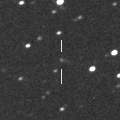
|
Now it is 17.2 mag (Nov. 2, Toshihiko Ikemura, Hirohisa Sato). It will brighten up to 14 mag in early 2023. It stays observable in good condition for a long time until spring.
Date(TT) R.A. (2000) Decl. Delta r Elong. m1 Best Time(A, h)
Nov. 20 4 44.15 2 25.9 4.301 5.224 156 17.3 0:49 ( 0, 57)
Nov. 27 4 40.86 2 23.6 4.242 5.180 159 17.3 0:19 ( 0, 57)
|

|
Now it is 16.5 mag (Sept. 3, Thomas Lehmann). In the Northern Hemisphere, it stays observable for a long time while it is getting fainter slowly. In the Southern Hemisphere, it will never be observable again.
Date(TT) R.A. (2000) Decl. Delta r Elong. m1 Best Time(A, h)
Nov. 20 14 31.88 40 56.5 7.573 7.173 62 17.3 5:11 (238, 28)
Nov. 27 14 35.67 40 48.1 7.570 7.220 65 17.4 5:16 (240, 33)
|
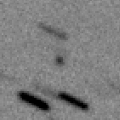
|
Now it is 21.4 mag (Aug. 19, Pan-STARRS 1, Haleakala). It was expected to be observable at 17 mag from November to March. But actually, it is much fainter than expected. It is observable in good condition in the Northern Hemisphere, but it locates low in the Southern Hemisphere.
Date(TT) R.A. (2000) Decl. Delta r Elong. m1 Best Time(A, h)
Nov. 20 6 4.43 22 30.7 1.768 2.649 146 17.5 2:10 ( 0, 77)
Nov. 27 6 1.25 23 16.2 1.706 2.631 154 17.4 1:39 ( 0, 78)
|
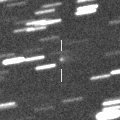
|
Now it is 17.5 mag (Nov. 5, Toshihiko Ikemura, Hirohisa Sato). In the Northern Hemisphere, it stays observable at 17 mag in good condition until winter. In the Southern Hemisphere, it stays locating extremely low for a while.
Date(TT) R.A. (2000) Decl. Delta r Elong. m1 Best Time(A, h)
Nov. 20 9 15.76 24 36.8 1.766 2.217 103 17.4 5:11 (348, 79)
Nov. 27 9 18.73 23 37.3 1.716 2.249 109 17.5 4:56 ( 0, 79)
|
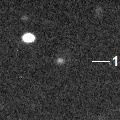
|
Now it is 17.4 mag (Nov. 3, Toshihiko Ikemura, Hirohisa Sato). It will brighten up to 15 mag in 2022 winter. In 2021, it stays observable in good condition while the comet will be brightening gradually.
Date(TT) R.A. (2000) Decl. Delta r Elong. m1 Best Time(A, h)
Nov. 20 22 30.48 -17 29.5 2.653 2.914 95 17.5 18:33 ( 0, 38)
Nov. 27 22 34.97 -16 51.4 2.726 2.889 89 17.5 18:18 ( 2, 38)
|
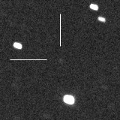
|
It will brighten up to 11.5 mag in 2022 winter. It stays observable while the comet will be brightening slowly.
Date(TT) R.A. (2000) Decl. Delta r Elong. m1 Best Time(A, h)
Nov. 20 3 28.76 14 18.2 2.495 3.479 173 17.8 23:30 ( 0, 69)
Nov. 27 3 22.54 13 56.4 2.477 3.444 166 17.7 22:56 ( 0, 69)
|
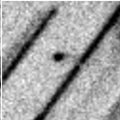
|
Now it is 18.3 mag (Nov. 3, Toshihiko Ikemura, Hirohisa Sato). It is observable at 17-18 mag in good condition from November to December.
Date(TT) R.A. (2000) Decl. Delta r Elong. m1 Best Time(A, h)
Nov. 20 5 40.91 0 45.9 1.007 1.903 145 17.8 1:47 ( 0, 56)
Nov. 27 5 20.60 5 41.0 0.964 1.913 157 17.7 0:59 ( 0, 60)
|
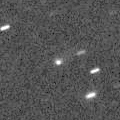
|
It will be observable at 17 mag in good condition in spring.
Date(TT) R.A. (2000) Decl. Delta r Elong. m1 Best Time(A, h)
Nov. 20 13 0.15 -4 59.4 5.428 4.737 41 17.9 5:11 (294, 22)
Nov. 27 13 5.90 -5 36.8 5.347 4.735 47 17.8 5:16 (299, 27)
|
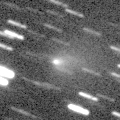
|
Outburst occured in early August, and it brightened up to 14.1 mag (Aug. 7, Michael Jager). Now it is fading. It has already faded down to 17.5 mag (Nov. 3, Toshihiko Ikemura, Hirohisa Sato). In the Northern Hemisphere, it stays observable in good condition. In the Southern Hemipsphere, it stays locating extremely low after this.
Date(TT) R.A. (2000) Decl. Delta r Elong. m1 Best Time(A, h)
Nov. 20 5 45.08 49 14.2 2.020 2.860 141 17.9 1:51 (180, 76)
Nov. 27 5 37.29 49 20.2 2.012 2.890 146 18.2 1:16 (180, 76)
|
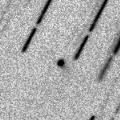
|
Michael Jager detected its cometary activity on Sept. 25. It approached to Earth down to 0.35 a.u. in early October, and it brightened up to 16.2 mag (Oct. 3, Michael Jager). Now it is fading rapidly. It has already faded down to 18.0 mag (Oct. 27, Katsumi Yoshimoto).
Date(TT) R.A. (2000) Decl. Delta r Elong. m1 Best Time(A, h)
Nov. 20 1 27.47 -15 22.3 0.580 1.442 131 17.9 21:30 ( 0, 40)
Nov. 27 1 39.52 -15 31.6 0.642 1.471 127 18.2 21:14 ( 0, 40)
|
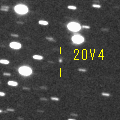
|
Now it is 18.0 mag (Nov. 4, Toshihiko Ikemura, Hirohisa Sato). It is observable at 18 mag in good condition in winter.
Date(TT) R.A. (2000) Decl. Delta r Elong. m1 Best Time(A, h)
Nov. 20 8 8.61 4 5.4 4.719 5.187 113 18.0 4:13 ( 0, 59)
Nov. 27 8 8.52 3 46.0 4.630 5.192 119 17.9 3:46 ( 0, 59)
|
|
![]()
 7P/Pons-Winnecke
7P/Pons-Winnecke (3200) Phaethon
(3200) Phaethon C/2020 U4 ( PanSTARRS )
C/2020 U4 ( PanSTARRS ) 230P/LINEAR
230P/LINEAR C/2020 S4 ( PanSTARRS )
C/2020 S4 ( PanSTARRS ) C/2018 N2 ( ASASSN )
C/2018 N2 ( ASASSN ) 274P/Tombaugh-Tenagra
274P/Tombaugh-Tenagra 241P/LINEAR
241P/LINEAR 119P/Parker-Hartley
119P/Parker-Hartley 81P/Wild 2
81P/Wild 2 P/2021 U3 ( Attard-Maury )
P/2021 U3 ( Attard-Maury ) 99P/Kowal 1
99P/Kowal 1 17P/Holmes
17P/Holmes 2010 OE101
2010 OE101 P/2020 V4 ( Rankin )
P/2020 V4 ( Rankin )![]()







































































